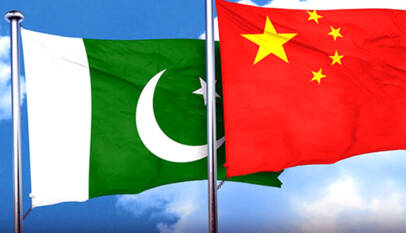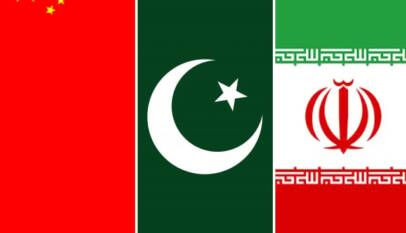Shipbuilding industry to be explored under CPEC
Despite Pakistan’s dependence on sea trade, the relevant authorities have yet not fully explored the field of shipbuilding. While China, with some other countries, has dominated the shipwright industry. In recent times, CPEC is a god gifted opportunity to explore shipbuilding industry in Pakistan. Gwadar is a hub of global shipping lines and to set up a state- of-the-art facility, capable of repairing and building ships, at Gwadar under the CPEC would promote regional and global integration.
CHINA-Pakistan Economic Corridor (CPEC), a windfall opportunity for maritime sector, has also resulted in the growth prospects for shipbuilding industry in the country. But, the Karachi Shipyard with limited tonnage capacity is unable to compete with regional yards particularly in the Gulf which are equipped with state-of-the-art facilities for all the four major areas of operation – shipbuilding, ship repair, oil rig construction and oil rig support. At present, bulk of the regional business is being captured by major yards in the Gulf like Dubai Dry Docks in the UAE, King Salman Global Maritime Industries Complex in Ras Al-Khair, Saudi Arabia, Abu Dhabi Shipbuilding (ADSB) in the UAE, Nakilat Damen Shipyards Qatar (NDSQ), Oman Dry-dock Company (ODC) at Duqm Port and Kakilat-Keppel Offshore & Marine Ltd in Qatar and Arab Shipbuilding & Repair Yard (ASRY) in Bahrain.
The existing facilities at Karachi Shipyard & Engineering Works (KS&EW) are not sufficient considering the PNSC’s fleet requirement, growing prospects of Pakistan’s economy, modern era for different category vessels, emerging requirement on the trade route and availability of more competitive services in the region. Deadweight tonnage of the biggest Aframax Tanker Quetta in current PNSC’s fleet is 107,215. Whereas, KS&EW has 2 Graving Docks with limited capacity (i.e. capacity of one dock is 18000 and other’s 26000 DWT) and 3 Shipbuilding Berths with miscellaneous capacity (i.e. capacity of one berth is 6000 DWT, second is of 15000 DWT and third is of 26000 DWT).
According to KS&EW, emergency repairs were carried out on a 250,000 DWT vessel at outer anchorage of Karachi as the vessel, because of its size, could not enter Karachi Harbour. Therefore, the existing capacity of KS&EW has a big question mark particularly on any unforeseen security scenario where an emergency repair would likely be required for the indispensable national flag carrier. So, this industry has not only economic aspects but also has national security dynamics. On one hand, the expansion and upgradation of existing facilities at KS&EW is important so as to meet at least the requirement of national flag carrier. While, on the other hand, considering the prospects under CPEC with a greater likelihood of quantum jump towards demand side, the development of a new state of the art facility area for Shipbuilding, Repair and Maintenance is quite significant at Gwadar Gateway which will be the future hub of shipping-related activities indeed.
Shipbuilding is a capital intensive but generally termed as a nation building industry. This industry is dominated by China, South Korea and Japan mainly due to right approach, cheaper wages and strong government backing. Pakistan, despite having a few merchant ships in its inventory and almost total dependence on sea trade, has not taken any worthwhile measures to exploit the shipbuilding sector. Whereas, Pakistan offers cheap labour and compared to China it is about 82% less i.e. approximately 0.59-0.81$ per hour compared to 3.32- 4.49$ per hour. But, due to lack of opportunities in Pakistan, most of this workforce is employed in the Middle East. This work force can be attracted to join shipbuilding industry at home if favourable financial package and opportunities are offered to them. So, establishment of a new facility at Gwadar can cater things in many ways for which endeavours of CPEC framework would be instrumental for fruitful results.
During March 2018, the Federal Cabinet approved the plan to setup a new Shipyard at Gwadar and it was supposed to be implemented over 3-5 years, but news for ground-breaking is still awaited. Perhaps, the Federal Government has less clarity or priority about the project financing and model approach for it. However, this initiative at Gwadar should set up a state- of-the-art facility capable of repairing and building ships up to 600,000 DWT to cater regional and global demands.
There are a few concerns of the experts regarding the market demand and the overall size of the facility that would likely cover VLCC/ULCC. But, it is quite inspiring that the Federal Government has so far shown a futuristic vision which can be materialized with a phase-wise market-driven approach. The first phase may comprise different steps with a focus on more number of units (docks and berths) for a Suezmax size i.e. between 120,000 to 200,000 DWT operational aspects of the overall facility and rationalized number of units may be planned in later phase for the size up to 500,000 to 600,000 DWT considering the potential market demand.
With rapid assessment method, market analysis reflects quite promising prospects for such an initiative at Gwadar and would help in establishing a smart and successful maritime city at Gwadar by involving a web of allied/ancillary industrial hub of activities for its different operational aspects. Gwadar has many projects under development process including the New Gwadar International Airport which will be supporting ends for this initiative. In addition, Gwadar is a nearby place for the hub of global shipping lines which would offer better business opportunity particularly for ship repair and maintenance.
The establishment of such a facility would likely involve a capital cost around 0.6 to 1 Billion US$ for Shipbuilding and 0.5 to 0.75 Billion US$ for Ship repair and maintenance component. Considering the capital intensive nature and the long-term benefits for national security and technological/industrial advancement in many fields related to Shipbuilding Industry, even if it does not bring immediate returns, the active role of Federal Government is critically important towards such an important venture.
As per news sources, it was considered to set up the facility in the form of JV with foreign investors and Pakistan Navy is supporting this initiative. But, the government’s roadmap is probably unclear yet. Other than JV, a Public-Private Partnership (PPP) BOT model can also be explored to have an extra edge for a new, innovative and more competitive brand under CPEC endeavours. However, prioritizing and initiating the project under CPEC framework would provide fast track solution.
—The writer is Senior Researcher at National Institute of Maritime Affairs (NIMA), Islamabad.
CPEC and Kazakhstan’s vital role in regional trade
The Republic of Kazakhstan has opened doors for the expansion of trade with Pakistan that …













